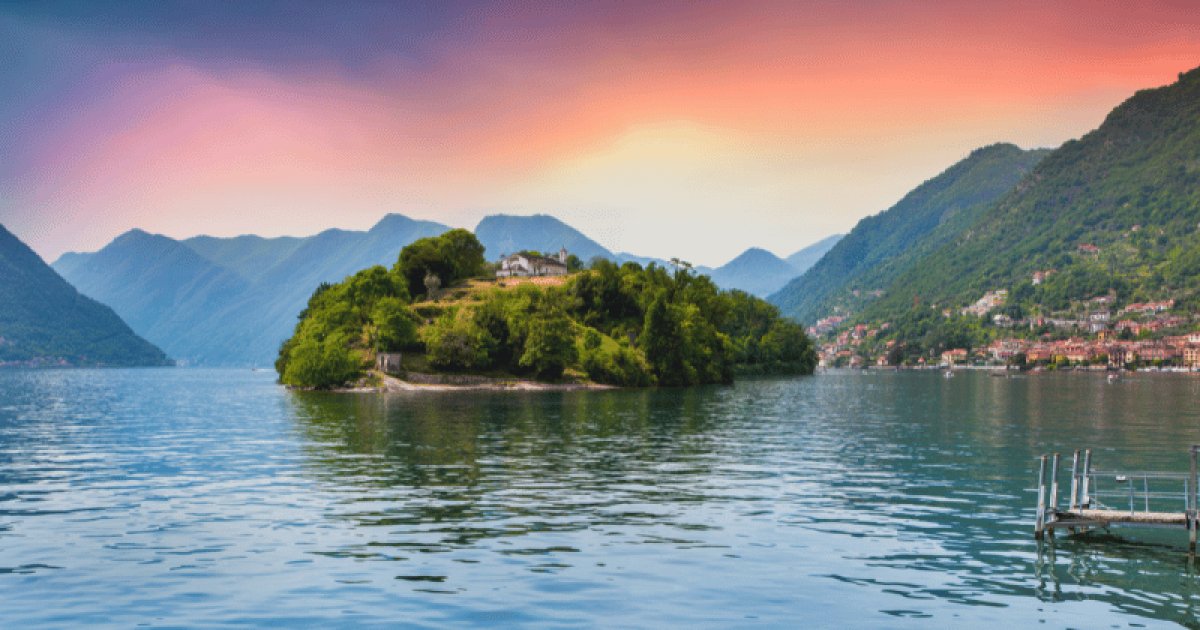ISOLA COMACINA, Isola Comacina
 Language: English / USA
Language: English / USA
Hi, I am Marcy, your personal guide, and together with MyWoWo I’d like to welcome you to one of the wonders of the world: the Isola Comacina.
From the fifth century A.D. to 1169, this small island, Isola Comacina, played a key role as a defensive bulwark due to its strategic position. Then it was unfortunately razed to the ground in revenge. But what was its offense?
You should know that between 1118 and 1127, the Isola Comacina and the surrounding territories had sided with the city of Milan against Como in a ten-year war, won by the Milanese. It was not long before the two cities clashed again. This time, however, Como had a powerful ally on its side: Frederick Barbarossa. After defeating Milan in 1162, the people of Como took revenge on the neighboring municipalities as well as Isola Comacina, of which only the ashes remained. The 1169 destruction is commemorated every year in June, with a fireworks display for the feast day of St. John.
The rebirth of the island, after centuries of neglect, is due to the archaeological excavations carried out between 1914 and 1978, which brought to light many artefacts, now on display in the Ossuccio Antiquarian Museum. The remains of ancient buildings, mainly churches, can be easily visited by walking along the island's paths, guided by a map that you can request when purchasing an entrance ticket, and by the explanatory signs that describe the sites in detail.
These include three modern structures, the 'artists' houses', in the rationalist style, built around 1940. In 1917, Albert I, King of Belgium, received the island as a gift from its owner, Augusto Caprani, but ceded it shortly afterwards to the Italian state. The president of the Brera Academy of Fine Arts became interested, and the project was launched to transform the site into a place of art and culture where, even today, Belgian and Italian artists stay between May and September.
If you have time, stop and visit the picturesque village of Ossuccio, with the Sacro Monte della Beata Vergine del Soccorso, a UNESCO heritage site since 2003. You reach the sanctuary by following a devotional path of about one kilometer, lined with 14 votive chapels, built between 1623 and 1710, adorned with a total of 230 life-size statues.
The 16th-century temple houses a white marble statue of the Virgin which is much venerated. It is said to have healed the deaf-mute girl who found it.
I bid you farewell with an interesting fact: The feast day of Saint John is also known as 'dei lumaghitt', a name that recalls an ancient custom of the past of eating polenta and snails in celebration and turning the shells into candles.



